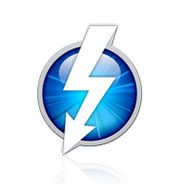One of the reasons editors poo pooh changes in their editing environment is the time it takes to make the conversion to whatever the new gear might be. Imagine buying a house, spending a year getting the furniture just right, and landscaping done, and you’ve enjoyed your first garden party with your friends and family. Suddenly, you discover that in order to get your friends and neighbors to continue coming over, you’re going to need to move to a different house – and essentially start over. Ouch.
Incremental updates and improvements to software is always a good thing. But when technologies change, and we’re all expected to jump on board and change with everyone, that becomes less exciting – by a factor of “a lot.”
Remember when Firewire 400 came out? If you don’t you’re too young to edit professionally – just kidding. It was supposed to be FAST. Oh, but not so fast – Firewire 800 would get the data moving at hyperspeed. And just when your collection of 50 Firewire 800 drives have been properly labeled and filled with content, Apple introduces new, faster, slimmer, brighter Macs ideal for production, but um… no more Firewire. I won’t even begin to talk about USB 3. Well, maybe a bit, but not yet.
And did I mention there’s a new way to move all of those huge HD files now? It’s called Thunderbolt.
Thunderbolt has been around for awhile. But it’s only now that the integration into the average post suite makes sense. There are a number of drives, most of them RAID-based, that work with Thunderbolt and your Mac or PC.
It’s fast. Two channels of data moving at 10 Gbps – that’s 12 times faster than Firewire – and with dual channels. Thunderbolt is based on two technologies: PCI Express and DisplayPort (and it’s from Intel). But, just like the old stereo high end systems, your system is only as good as the weakest link. So, now that there’s a really super fast data and display tech, how do you get hooked up?
Have you ever noticed that many people build their workstations around their CPU – their computing device? Now, you can try dancing to a different drummer: create your edit suite from the hard drive up.
First, determine what your strategy will be. How will you store archived projects? How will you transfer data to those storage devices?
Do you need to move your storage devices around? How will you combine data (video, graphics, audio, etc.) storage with ingest of video, export of video, etc.? And, what about a plan to back up everything?
So, before we even think about the computer we’re going to use, we need to think about storage, displays, video input, output, and the various adapters to let us use all of our old gear. I love the ability to use a RAID, but I hate large boxes, fan noise, and lack of transportability. Now that I understand what I need generally, it’s time to give some thought regarding what to do specifically! We’ll address that in the coming week.
Daisy chain to your heart’s content – adding drives and displays. In the old days of a few weeks ago, you’d need multiple cables, multiple technologies, etc. so, simplicity is what we’re talking about. Oh. Wait. What about all of that older technology?
Apple is on the verge of releasing a Thunderbolt to Firewire 800 adapter. So, in theory, you will be able to use all of your old (even a week ago is now old, so get over it) drives.

